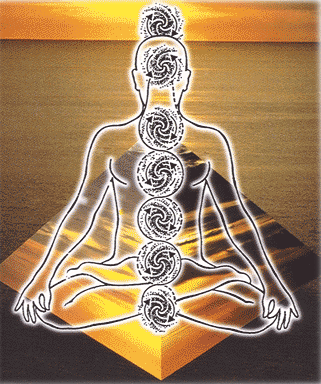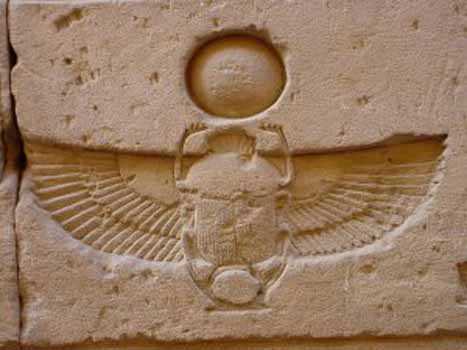
"Then let it break! I must know who I am!" - Oedipus Rex
Thanks to Freud, Sophocles' Oedipus Rex is probably the most misunderstood play in the West. Before Freud, Oedipus' story was seen as the classic expression of the horror of a Universe in which one was trapped by events which one could not change or effect, where one's destiny one's was in the hands of inexorable Fate, and where, instead of love or justice descending from the Gods to Man, there was only cold, heartless necessity. After Freud, it became about the Oedipus Complex, the psychological trap Freud believed every man was doomed to become trapped in, and out of which all of Western culture and morality had evolved: the realisation that one's first sexual instinct was towards one's mother and therefore one's first murderous instinct was towards one's rival, the father. Out of this primal experience coupled with the ancient societal taboo against incest and parricide came the endless guilts, paradoxes and moral evasions that human culture found itself in. For Freud, every man was doomed to experience this, just as every woman, as reflected in the Electra story, was doomed to experience the same thing in reverse - sexual feelings for the father and hatred for the mother. Sophocles was only the first to articulate it as a universal. Oedipus' howl of despair and rage at the end of the play was every man's howl of agony at recognising this terrible truth within himself. Freud's excitement on encountering the play for the first time was almost religious in its intensity. Suddenly, for him, everything fell into place, his whole system seemed corroborated. So Sophocles' play, identified by Aristotle as the quintessence of what tragic drama was all about, became locked in a Freudian nightmare forever.
Neither of these interpretations of the play are necessarily wrong. Both give our understanding of it texture. But at the same time neither is necessarily what Sophocles intended when he wrote it, or, even if we can't say what he intended for sure, neither exhausts its possibilities. There are other ways of encountering and understanding the play, one of which may unlock something vital and potent within it that liberates it from its apparently cruelly deterministic aura of doom: that the play is, on a very profound level, about Sight. And not just about physical sight, but the profoundest sight available to us - sight into the deepest part of our nature.
 To understand what I am wittering about, its worth looking at the way in which eyes and sight have worked historically in cultures that predate our own. The eye - eyes themselves - has always been an image of something profoundly sacred all over the world. In the East, the sign of Buddha's 'Awakening' or 'Enlightenment' is the fact that his eyes are permanently closed, unseduced by sense perception, the entangling and tormenting constantly changing and transient phenomena of this world of Maya, Illusion, which distracts the mind from itself and causes so much pain. The Buddha is 'asleep' to this world and 'awake' to the inner world. If any part of him is 'awake' it is the famous Third Eye, the Ajna Chakra, which provides mystical and intuitive insight into Truth. Sometimes known as the 'Gyananakashu', or 'Eye of Knowledge', it is regarded as the seat of the Antar-Guru, or Inner Teacher, communicating with the deepest part of ourself. Thus although the Buddha's physical eyes are closed, his spiritual eye is open in the profoundest sense, seeing things as they truly are.
To understand what I am wittering about, its worth looking at the way in which eyes and sight have worked historically in cultures that predate our own. The eye - eyes themselves - has always been an image of something profoundly sacred all over the world. In the East, the sign of Buddha's 'Awakening' or 'Enlightenment' is the fact that his eyes are permanently closed, unseduced by sense perception, the entangling and tormenting constantly changing and transient phenomena of this world of Maya, Illusion, which distracts the mind from itself and causes so much pain. The Buddha is 'asleep' to this world and 'awake' to the inner world. If any part of him is 'awake' it is the famous Third Eye, the Ajna Chakra, which provides mystical and intuitive insight into Truth. Sometimes known as the 'Gyananakashu', or 'Eye of Knowledge', it is regarded as the seat of the Antar-Guru, or Inner Teacher, communicating with the deepest part of ourself. Thus although the Buddha's physical eyes are closed, his spiritual eye is open in the profoundest sense, seeing things as they truly are. In Hinduism, Siva's eyes are similarly closed, especially when he is presented as the Nataraja, or Lord of the Dance, negotiating the Wheel of Fire, his eyes sealed, his gaze turned inwards, smiling as he dances. Tradition has it that when his eyes open, the whole Universe will end, as the Universe is no more than his own dream. His creative counterpart in the Trimurti, Brahma, is similarly in a state of deep meditation or sleep, blind, once again, to physical phenomena, emanating Reality from his dreams.

In the West, the Eye has equally powerful connotations. The All-Seeing Eye which conspiracy nuts get so uptight about is an ancient image of the all-seeing, all-pervading presence of God (and not Alien Illuminati Zionist Mind-controlling Puppet-masters, sorry). It appears in Kabbalah in exactly the same way as an image of God as Universal Consciousness aware of everything. Its oldest derived source is ancient Egypt, where it appears as the Eye of Horus or Wedjat, a symbol of Royalty and Protection against evil (and not evil itself, sorry you conspiracy guys!). The addition of the All-Seeing Eye on the summit of a pyramid which appears in Freemasonry echoes not only the Eye of Horus but the ancient Egyptian Benben stone, the primordial mound that emerged from the Waters at Creation out of which everything came. Thus the Masonic image combines the All-Seeing Eye of Kabbalah and the Judeo-Christian tradition with the Creation myth of ancient Egypt, the pyramid also being a symbol of the Soul. In ancient Greece, the Eye was often painted on the prow of ships to protect them as they travelled, a practise borrowed from the Egyptians and other cultures. When sculpting a statue, the statue was not 'finished' and did not truly take on the likeness of someone or 'come alive' until the eyes were painted on (anyone who has ever painted a figurine should try this. Notice the difference between one which has no eyes painted on and one which does). Even in somewhere as remote as Easter Island, it is believed that the great stone heads of the Ancestors that litter the shores were not 'active' unless their eyes were placed in their sockets.

Eyes, then, have massive significance all over the world as images of spiritual insight, cosmic power, protection, guidance and, simply 'doorways to the soul'. The great poets Homer and Milton were both blind and throughout literature physical blindness, as we shall see, is often seen as a sign of inner sight and understanding. Tiresias, the ancient Greek Seer who is never wrong is blind and in Shakespeare's King Lear, Gloucester only begins to grope towards a painful self-knowledge when he has his eyes torn out by Cornwall. As he himself says of his own moral blindness after he has lost his eyes:
"I have no way, and therefore want no eyes;
I stumbled when I saw."
Physical sight does not mean one has insight. Indeed, as the Tao Te Ching tells us, the physical senses can distract us from everything:
"The five colours blind the eye.
The five tones deafen the ear.
The five flavours cloy the palate.
Racing and hunting madden the mind.
Rare goods tempt men to do wrong.
Therefore, the Sage takes care of the belly, not the eye.
He prefers what is within to what is without."
"He prefers what is within to what is without" - what more powerful statement could there be about the journey Oedipus is forced to go on? In another Taoist text, the Secret of the Golden Flower, the eyes are seen to be the gates of the Chi or Life Force, with Chi draining out of them unless we learn to redirect their energies back in. This vision of the discrepancy between Inner and Outer sight reappears in the Upanishads, when the Sage is encouraged to trace the source of sight away from the external world and within themselves, to the Spirit, or Consciousness which is their actual being:
"Know that when the eye looks into space it is the Spirit of man that sees: the eye is only the organ of sight. When one says 'I feel this perfume,' it is the Spirit that feels: he uses the organ of smell. When one says 'I am speaking,' it is the Spirit that speaks: the voice is the organ of speech. When one says 'I am hearing,' it is the Spirit that hears: th eear is the organ of hearing. And when one says 'I think,' it is the Spirit that thinks: the mind is the organ of thought. It is because of the Spirit that the human mind can see, and can think, and enjoy the world."
It is a common trick of sensory perception to make us believe more powerfully in the thing we perceive externally to us than the thing within us which does the seeing. How less certain are we of who we are, what our ground of being is, what our identity is, than we are of the tree we are looking at, or the film we are watching? What is external to us always seems more real and tangible than what is internal. Such is the conjuring trick of life.

In Oedipus Rex, we have two figures for whom sight is key - Tiresias, the Blind Seer, mentioned above, who has no physical sight but has total understanding and knowledge of the future, and Oedipus himself, the conquering King, who has physical sight but understands nothing. By the end of the play, Oedipus has become like Tiresias, similarly blind, but not yet with the insight the Seer has (that begins to come later in Oedipus at Colonus). That the play is about the often agonising progress of the individual to some kind of self-knowledge should be obvious. But there is more to it than this - and the nature of self-knowledge Oedipus comes to - which lies hidden in the play which cannot be understood unless one reads it on a level which few commentators do: the level of Initiation. For Oedipus Rex is much more than just a play. It is also an enactment of a Mystery, not just in the sense that Oedipus is trying to uncover his own true nature, but in the sense of a Mystery which unlocks the workings of the Unseen, just as, say the Dionysiac or Eleusinian Mysteries may have worked. To understand this, one has to understand two things about Greek Drama: that it was not drama as we understand it ie a form of entertainment, but part of a profound communal religious festival and that the form and structure of a Greek Theatre was not just designed to put on a play, but to explore the complex, multi-layered nature of the human organism, the interplay not of Man and the Gods, but of the physical and soul-self, the temporal self and the eternal...










